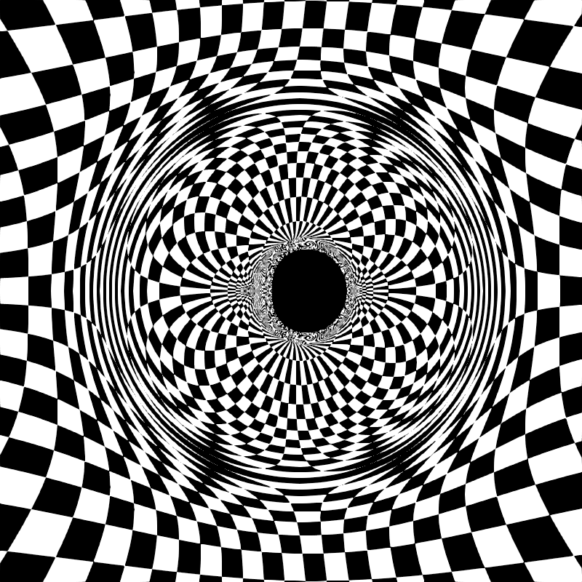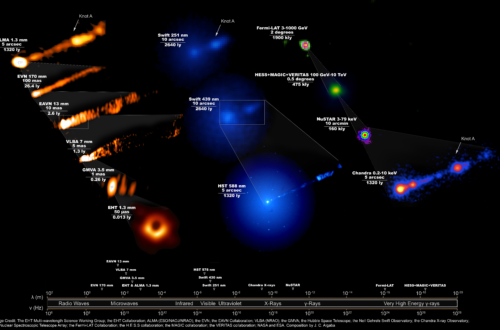Sorry for the delay in posting, I was knocked out for a few days with something but catching up now. So EHT did end up triggering the final night on 11 April! Things went really well, and one of the things I really wanted to see happen, happened! My main role in all this was to help organize and coordinate the “multiwavelength” observations, meaning trying to get telescopes in space and on the ground looking in other wavelengths (primarily X-ray and infared (IR) which are the only other bands besides radio that are visible through all the muck between us and the center of the Galaxy). We had a big overlap earlier in the week with EHT, Xray and IR that I posted about, but we didn’t end up seeing any changes. But on the last night, 11 April, we also had two premier X-ray observatories, Chandra and NuSTAR (that cover low and high X-ray energies, respectively) watching and lo and behold, a flare was seen, when EHT was watching too! This is very hard to achieve, because Sgr A* (the black hole I keep talking about) does these little bursts of emission called flares about once a day on average, but there is no predictable schedule. Sometimes there is no flare, sometimes there are four small flares, sometimes there’s a little “hiccup” and then a big flare. We still don’t understand what makes these flares, but from the short timescale (hours or less) we can figure out that it must be happening within 10s of Schwarzschild radii (equivalent to the event horizon for a non-spinning black hole) from Sgr A* itself. I have been studying these flares for coming up on 20 years now, since their discovery with Chandra in the year 2000, and we still don’t really know what is causing them. We are pretty certain that it has something to do with magnetic fields transferring energy to particles, but whether it’s a hotspot orbiting in the disk of infalling matter, or something relating to the presence of jets of plasma being ejected, is still not clear. Knowing the origin will help us build a better model of the physics near black holes, and help us also interpret the EHT images. So in some sense you can think of the flare as a “flashlight” that momentarily lights up things that might be too dark for us to see, and now having EHT observing at the same time means we might be able to actually see which part of the system is responsible. So I’m pretty excited about this, and it was an incredible feat of scheduling on the part of the X-ray folk, who had to basically take their best guesses after consulting with us, about how to point the telescopes and when. It typically takes 24 hours to change the complicated schedule and pointing of these beasts in space, so we didn’t have the option to just swing the thing around with minutes notice. Some facilities can do that, but not these.
Anyway, to end this thread of posts, instead of another picture of a telescope, I want to post a super groovy picture made to help illustrate the effect a spinning black hole has on spacetime, and how that distorts how things around it will look. This is the puzzle we need to solve effectively, so having these models is elemental to the process, we call it “general relativistic ray-tracing” because one has to trace individual rays of light from their origins to us, through the warped space time. How that works is based on Einstein’s theory of General Relativity, thus the name.
The image credit and description is: Bronzwaer, Moscibrodzka, Davelaar and Falcke, Radboud University 2017. This is an illustration of the gravitational lens of a Kerr (spinning) black hole (a = 0.99); the celestial map at infinity is a checkerboard pattern. In this image we can see the asymmetry induced by the black hole spin (in the shape of the horizon and the asymmetric background distortion). We can also clearly see the Einstein ring, the ring-shaped structure around the horizon.




